Grilled Salmon Collar with Ponzu Sauce
July 24, 2012 | Updated May 26, 2020
As an Amazon Associate I earn from qualifying purchases.
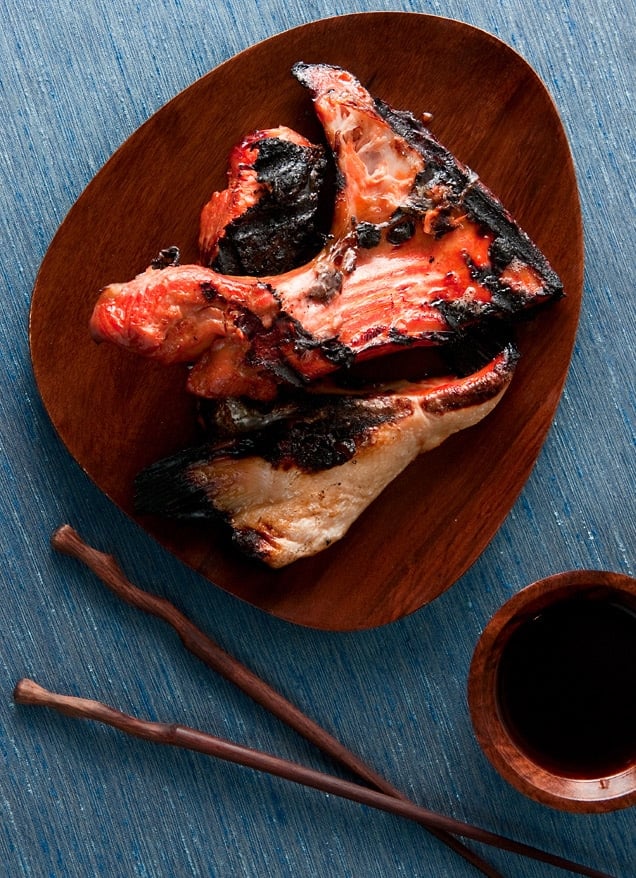
Every few years California gets a great salmon season, and when that happens we eat a lot of salmon. On the boats I fish, I see lots of people getting their fish filleted and happily walking away with slabs o’salmon.
They’re happy, but I can’t help but feel sorry for them: They just left the best part of the salmon with the deckhand: the salmon collar.
I’ve been a deckhand before, and I know that what the clients leave behind is often the best part of the fish. In no case is this more stark than with salmon collars.
What is a fish collar? It is the part of the fish behind the head and gills that extends to where you sliced off the fillet. It includes the pectoral fins. If you’ve ever eaten hamachi kama at a sushi restaurant, that’s the collar from a yellowtail jack.
Why bother with it? Well, it is insanely rich, meaty and just plain fun to eat. Lots of rich, fatty meat nestles in pockets around the fins, and then you get some regular meat at the top of the collar that you missed with the fillet knife. In all honesty, I’d rather eat collars than the regular fillets.
Only bother with collars from fish about 5 pounds or larger; anything smaller is not worth the trouble.
You remove the collar after you’ve filleted the fish. Do this with a knife and/or a pair of kitchen shears. The best way is to fillet your salmon from right behind the head, taking the collar with you. Then, you slice off the collar from just behind the pectoral fin.
Salmon collar is made for grilling. I cook them in no other way, although you could broil them if you don’t have access to a grill.
I’ve cooked them barbecue style, with indirect heat, as well as straight over the coals. I actually prefer a little char (oooh, fish pun!) that I get with the direct heating method. Indirect heat limits the charring, but the collars can stick to the grill more that way. Your choice.
A marinade is a good idea. Why? Because the collar isn’t very thick, so a marinade can penetrate quickly, giving you a boost of flavor. What I provide below is a pretty traditional hamachi kama marinade, but let yourself run free. Your mind is your only limitation here.
Dipping sauce? Traditional, but not vital. I’ve eaten collars both ways. Ponzu, a citrus-soy blend, is a great idea for salmon, because it’s so rich. You might want a sauce with a little fat in it if you were to grill a collar from a lean fish, such as a lingcod or striped bass.
Grilled Salmon Collar
Ingredients
- 4 salmon collars or collars from another large fish
- 1 tablespoon sesame oil
- 1/4 cup soy sauce
- 1/2 cup mirin or rice vinegar mixed with 2 teaspoons sugar
PONZU
- 1/3 cup lemon juice
- 1/3 cup lime juice
- 1/3 cup orange juice
- 1 cup soy sauce
- 1/4 cup rice vinegar
- 1/4 cup mirin
Instructions
- Put the sesame oil, soy and mirin in a container and toss with the salmon collars. Cover and marinate for at least 20 minutes, but 2 hours is better. You can marinate them as long as overnight, but more than that and the fish will get too salty.
- While the fish is marinating, mix all the ingredients for the ponzu sauce and set aside.
- Get your grill going. Wood is the best here, but charcoal or gas works fine, too. You want medium heat for fatty fish like salmon or yellowtail, hotter heat for a lean fish like a lingcod. The fat in the fish protects it from overcooking. Make sure your grill grates are hot, and spotlessly clean. Drain the fish collars from the marinade and allow to drip any excess away; this helps prevent flare-ups. Right before you set the fish on the grill, ball up a paper towel and grab it with tongs. Dip the paper towel in vegetable oil and wipe down the grill grates.
- Lay the fish on the grill skin side down. Cover the grill and cook until the skin side gets a little charred and a lot crispy. This should be at least 3 minutes, but if you have your heat at a nice medium, it will be closer to 5-6 minutes. Carefully flip the collars with a large metal spatula and cook for another 4-6 minutes on the meat side.
- Serve with steamed rice and the ponzu sauce on the side.
Notes
Nutrition
Nutrition information is automatically calculated, so should only be used as an approximation.
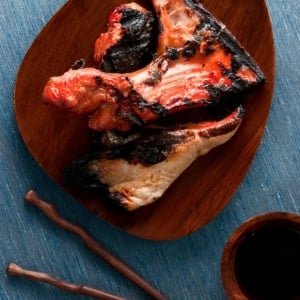
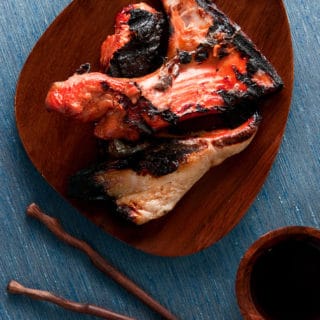
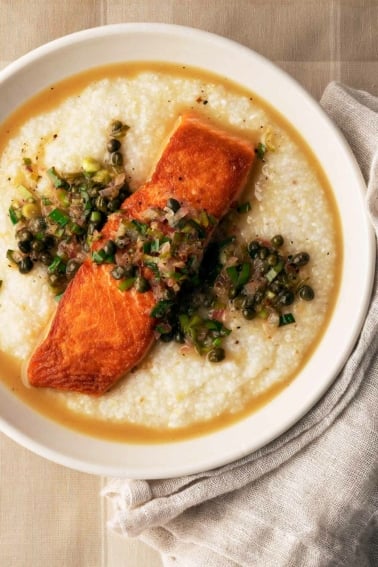
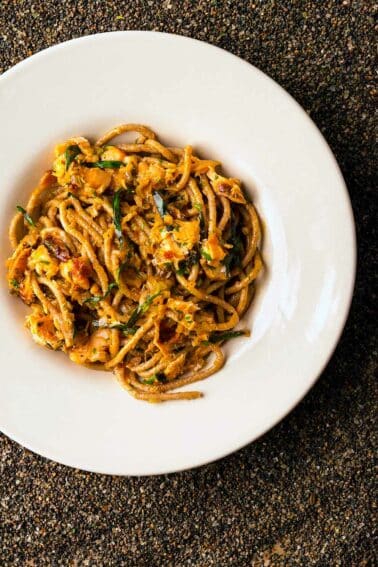
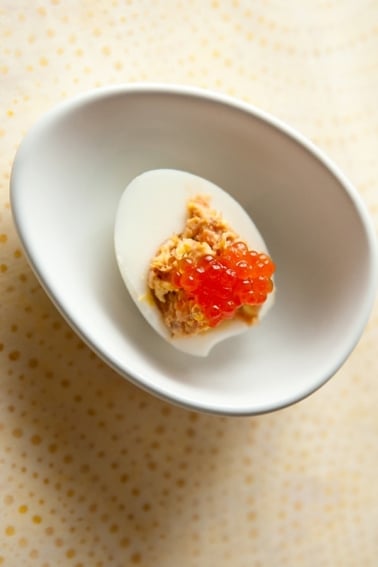
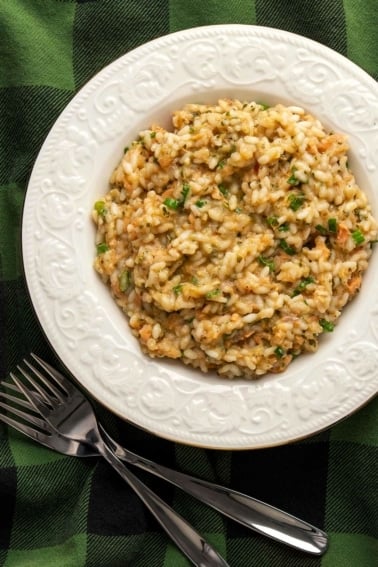
This was so easy a caveman can do it. The results were the BEST salmon kama I have ever enjoyed. Served it with white rice and made the fresh fruit ponzu sauce. I even got a complement from my wife.
Great Recipe
Great easy recipe. Did it with both salmon collars and with halibut collars i got from @yakobifisheries.com (went through 20 lbs surprisingly fast!) delicious!
Great easy recipe. Did it with both salmon collars and more recently with halibut collars i got from @yakobifisheries.com (went through 20 lbs surprisingly fast!) delicious!
Sorry, grinned!!
Hey Hank…I have caught lots and lots of salmon in my life. A couple of years ago I went out on a trip with R. J., your buddy and mine. It was a group of people, most of which had never caught a salmon before. So I waited until everybody else on board got their fish. We ran out of time and decided to head home. R. J. approached me and asked if I was ok with not catching a fish. I just smiled and said “I’m gonna take all of the heads and collars after your guy fillets everyone’s fish”. He grilled from ear to ear! This recipe is excellent. I make it with no modifications, comes out perfect every time.
Salmon heads — with collar — are only $1.99 a pound at my favorite grocery. (Steaks and filets at the same shop, by contrast, are commonly $20-$30 per pound.) We were delighted to see that you had a recipe for them, and it was perfect — we added a little garlic and ginger to the marinade for an extra kick, but otherwise made it just as written. Completely fantastic, and wild that it cost us practically pennies…
Since we cut off big belly fins so they don’t poke holes in the cling wrap when preparing for the freezer, this lovely marinade works well for those too.
Made it tonight with the salmon from your variety box and it was delicious!
Thanks!
Forgive me if this is a dumb question, but what counts as a collar? Are there two collars per salmon (one collar on each side) or is there one per salmon (the collar forming a u shape around the back of the head)?
Jonathan: Yes, two collars per fish.
So simple, so good!
I only have an hour to marinade, came out great.
Thank you for sharing!
This is such a killer recipe! I use it for fatty salmon (pinks), belly’s and evening the farmed Atlantic’s when I’m out of my stash of fish.
I have frozen salmon collars. What do I do to prep them?
SC: Thaw in the fridge a few days first.